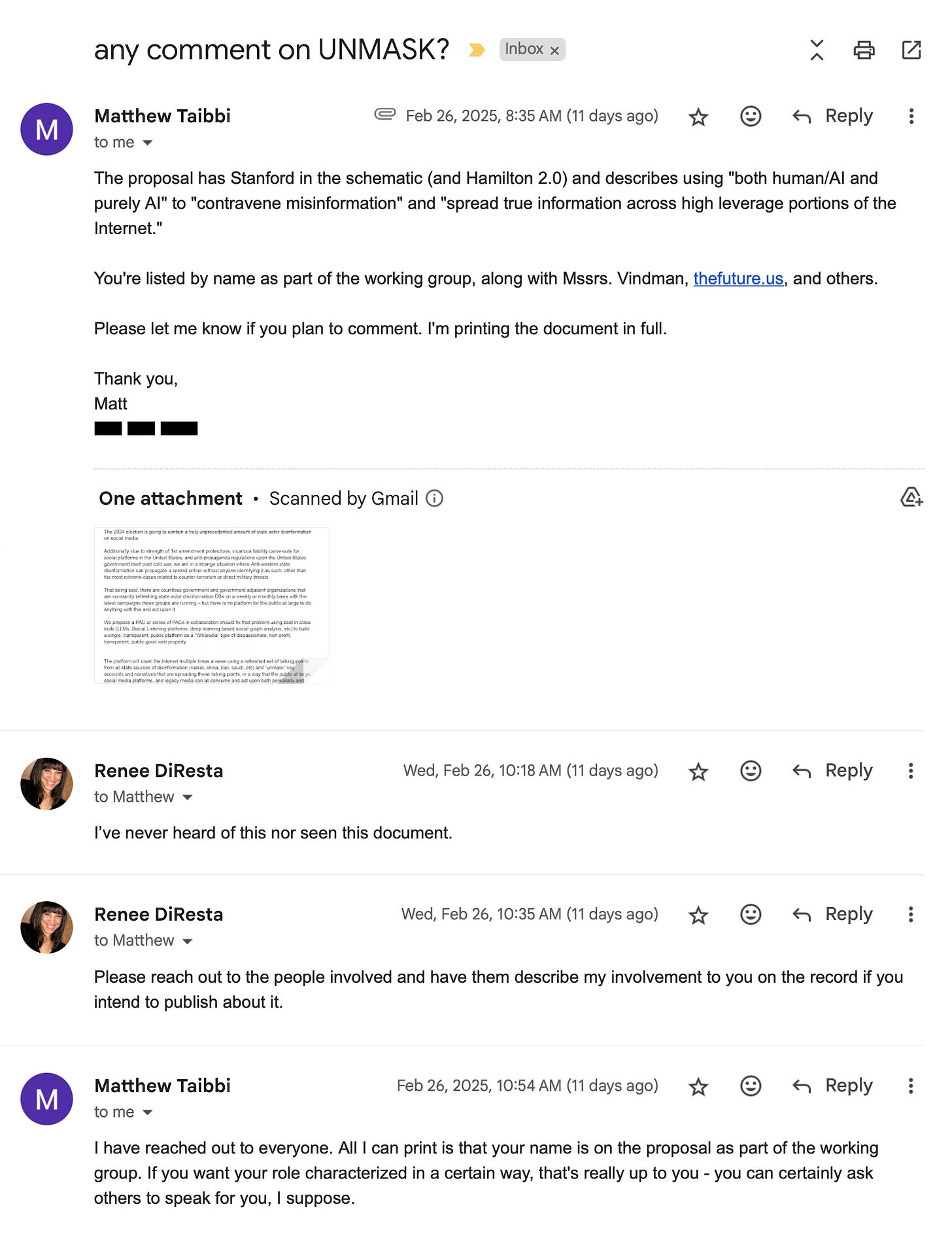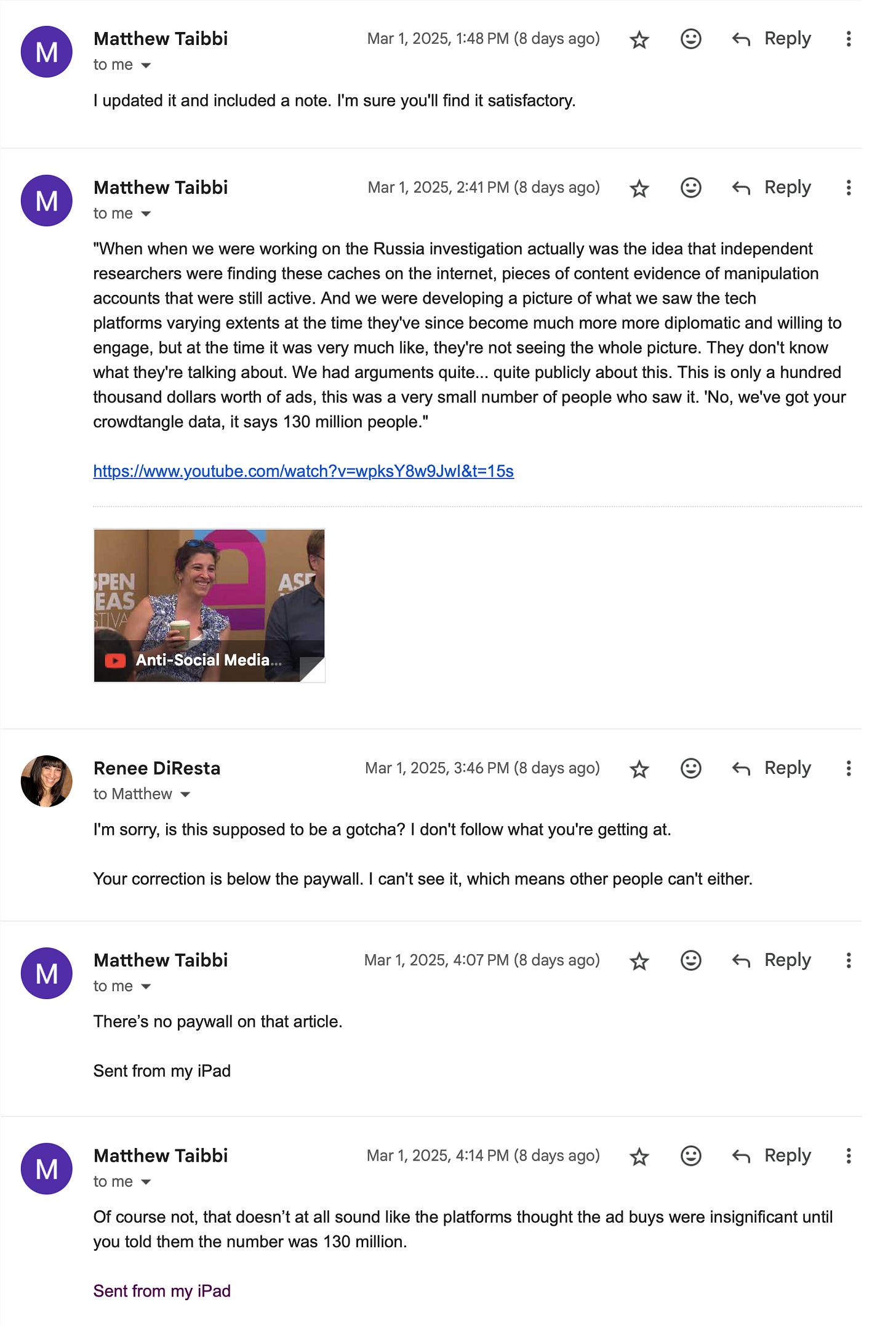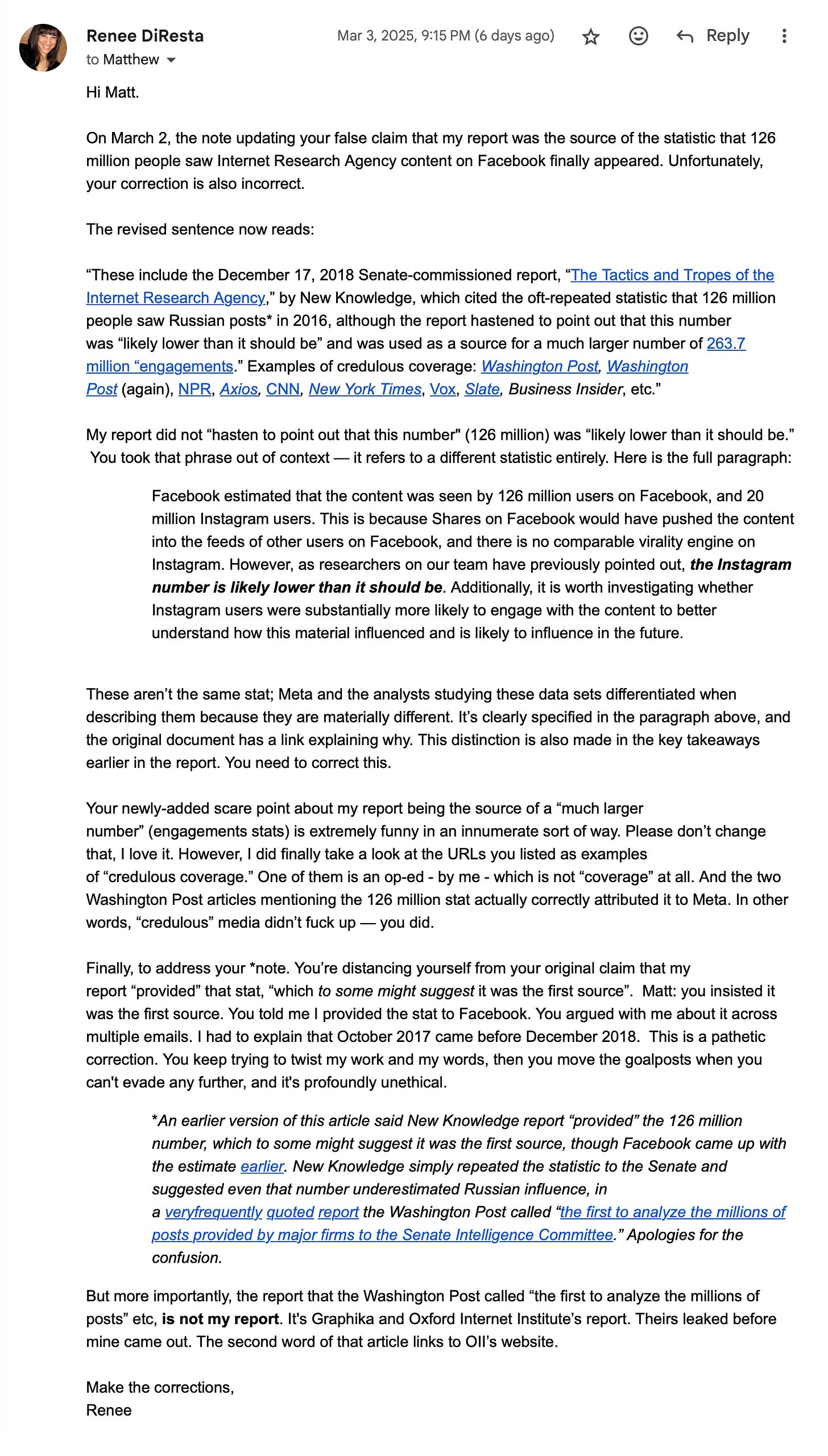An Object Lesson in Bad-Faith Media
Matt Taibbi and the Futility of Getting a Correction from Someone Who Won't Admit They're Wrong
For just over a week now I’ve dealt with Matt Taibbi on two separate email threads — a request for comment (initiated by him), and a request for correction (initiated by me). I’m posting those exchanges in full because they’re an object lesson in bad faith media. Taken together, they illustrate the unique blend of tendentiousness, maliciousness, and obtuseness that has flavored every interaction I’ve had with Taibbi over the past two years. They also exemplify his sloppiness.
Matt first reached out to me on Feb. 26 to let me know he’d obtained a document with my name on it. I had never seen it before, did not participate in whatever it appeared to be fundraising for, and told him so. I suggested he confirm this with others he claimed were named in the document. He responded mockingly, and implied that he intended to publish my name anyway, in a “just asking questions” kind of way. It was, as he pointed out, in the document!
Once someone like Matt posts innuendo, his fans and other Substack cranks treat it as gospel, even if he includes an obligatory “DiResta denied it” — and he knows this. Having seen Matt literally cut emails and quotes in half to support prior smear jobs, I fired off an unambiguous response reiterating his ethical obligation not to create false perceptions, got a strawman in response (“So you’re saying the document is fake?”) and went on with my day.
On March 1, I checked his Substack to see if he’d reported on the document. There I found a different post: an interview with Reason on the “collapse of the censorship regime,” focused largely on Europe, but prefaced with an extended comment on a 2018 report I led, analyzing the data set documenting Russian interference that tech platforms had turned over to the Senate Intelligence Committee. Matt referenced a statistic — that 126 million people had seen Russian ads on Facebook — claiming that my report had “provided” it, that “credulous” media had fallen for it, and that it was an example of how overblown claims of foreign interference actually were. As Matt has increasingly attempted to retcon all aspects of Russian interference as some kind of hoax, he has referenced this statistic as an example of dishonest framing from dishonest people boosted by dishonest media.
The problem is that the statistic didn’t come from my report. It came from Meta, in October 2017, provided to Congress a year and two months before my December 2018 report came out. Matt also got the second half of the claim wrong: it wasn’t referring to “ads”, but to the reach of 80,000 posts.
Matt has misstated basic facts about my work for years. So I sent a note requesting a correction. I included the timeline evidence and ads-vs-posts distinction.
He said he would issue a correction, though none appeared at that time (I wondered if this was due to a paywall; it was not). He then continued to argue with me over multiple replies, insisting I had given Meta their stat.
After multiple explanations, he said that it didn’t matter anyway.
The following afternoon, a changed version of the sentence finally appeared on the post (original vs correction below), and he added a note — blaming the reader for any “potential confusion” about the meaning of the word “provided”.
However, since the entire point of referencing my report was to claim that dishonest people exaggerated numbers — and it’s hard for him to make that claim about Meta’s analysis of its own platform — his “correction” introduced new ‘mistakes’ in an effort to keep his argument from collapsing. The phrase that Matt cherry-picked — “likely lower than it should be” — referenced a different statistic entirely. He just grabbed it and stuck in there (and then complained about yet another large number). So I sent another correction request. While looking through the rest of the updated post, multiple other sloppy mistakes jumped out.
The final sentence in Matt’s correction note is unintentionally revealing: he moves from saying my report “provided” the stat to saying we “simply repeated it” in a “very frequently quoted report” that the Washington Post called “the first to analyze the millions of posts provided by major firms to the Senate Intelligence Committee”. The problem is that the report the Post describes… wasn’t my report! That article covers a report produced by the Oxford Internet Institute and Graphika, who analyzed the same data set… and found the same thing.
When the Senate ran this process, they blinded the research teams. They knew that the work would become a political football, and wanted independent analyses. In other words: Taibbi inadvertently undermined his own bad faith attack by linking to coverage of the other report and their big numbers. But he’s too stupid to understand that.
Why am I publishing these emails? Because they are transparently bad faith, and I hope that readers can see these exchanges for what they are, and understand that they’re part of a pattern. Matt is chronically working backward from a conclusion that fits his preferred understanding of the world. This is, of course, why Elon Musk originally chose him to do the Twitter Files.
People can disagree with me on content moderation, tech policy, influence operations, or any other aspect of my work. If you want to challenge my interpretation of data in an analysis or report, make the case. I've spent over a decade publicly writing, speaking, and debating these issues, and I regularly engage with good-faith critics across the political spectrum. But that’s not what this is.
Unfortunately for all of us, time-wasting bad-faith bullshit artists continue to rely on half-truths, insinuation, and outright lies, and they are often rewarded for it. My hope is that if enough people explain how this works, or push back, that dynamic will change.









